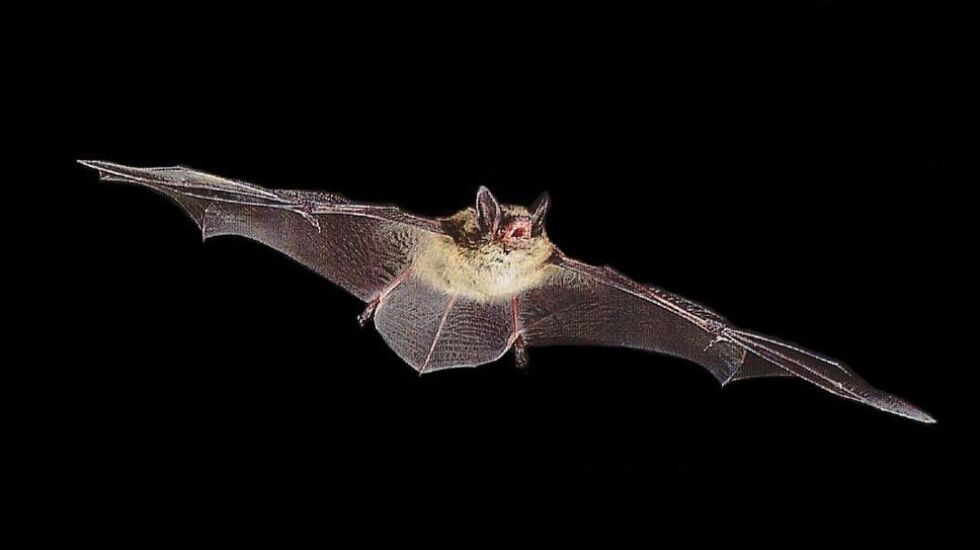
The bat phone is ringing off the hook, you might say.
Just in time for Halloween, bats are increasingly being spotted in the Chicago area as the weather cools and the winged creatures migrate for fall — driving some residents needlessly batty.
Cook County Animal Care and Control has received an influx of 311 calls about the nocturnal mammals since temperatures dropped earlier this month, said operations manager Angela Rayburn.
“We’ve definitely heard from more people about seeing bats,” Rayburn said, adding that no one should be alarmed.
Callers either report seeing a bat or that a person or an animal has been exposed to one, Rayburn said.
Most of the latest calls have just been sightings. Not many have been exposure calls, which are a higher priority.
Bat sightings are likely high since it’s colder, and the warm-blooded animals are roosting near homes for warmth, Rayburn said.
But Rayburn cautioned people against calling animal control if they just spot a bat in their backyards or on buildings. The creatures do not pose a threat, but animal control’s policy is to euthanize any bats people ask to have removed from their property.
“We don’t want to go around killing them. We ask people not to report them if they’re not affecting them. If we pick a bat up, we’re not bringing them back or releasing them,” Rayburn said. “They can just be left alone or shooed away.”
As they should with any wild animal, people need to keep their distance and not try to touch or pick up a bat, Rayburn said. If the animal does appear to be sick or injured, she advises people to call 311 to report it to animal control.
While rabies is a major concern for the agency, Rayburn said the vast majority of bats they have collected this year were not infected with the viral disease. Bats can indeed carry rabies, but it’s a myth that every bat does. Typically, only two people in the entire nation die each year from rabies they’ve contracted from a bat.

Dog and cat owners can also help manage the spread of rabies and reduce the number of bats with rabies by keeping their pets up to date on their rabies vaccinations, Rayburn said.
‘Bats are beneficial’
Bats are also helpful, Rayburn said, eating mosquitos, cockroaches and crop pests. The winged mammals can eat as many as 1,000 insects a night. Some species of bats are also pollinators.
“Bats are beneficial; we need them to be a part of the ecosystem,” Rayburn said.
The increase in bat sightings can also be tied to some species of bats migrating through the area, said Lawrence Heaney, the Field Museum’s resident bat expert and curator of mammals.
During the colder months, bats will either hibernate, enter a deep sleep or migrate south. Two of the more common bat species in the Chicago area, big brown bats and little brown bats, tend to stick around most of the year until they head for caves and old mine shafts for the winter, Heaney said.
Heading to the Bat Cave, in other words.
Meanwhile, species such as silver-haired bats and red bats are migratory and make their way south.
“When big cold fronts come through and produce bird migrations, bats are responding, too. It’s just not as obvious, but a large number of bats are moving through at the same time,” Heaney said.
He agreed that people have nothing to fear from bats being near.
“Bats are just really cool animals,” Heaney said. “They’re really smart. They’re very inquisitive, very interested in what’s going on around them.”
Despite the recent spike in calls to animal control, the local bat population has dropped considerably in recent years, Heaney said. He attributes it to a fungal infection called white-nose syndrome that has been killing millions of bats during their hibernation since 2006 when the disease first arrived in the U.S.
“My wife and I walk our dog every evening after dinner, and I always look out for bats. It’s darker now and harder to tell, but I’ve seen very few bats. And I never see as many as I used to before white-nose syndrome really hit,” Heaney said.
The big brown and little brown bats that head to nearby caves for the winter travel and hibernate in large colonies. The size of those colonies has declined by at least 90% because of the fungus, Heaney said.
“This disease has just hit them terribly, terribly hard,” he said. “The population can’t get a whole lot smaller than it is right now.”
So consider a pre-Halloween sighting treat.







